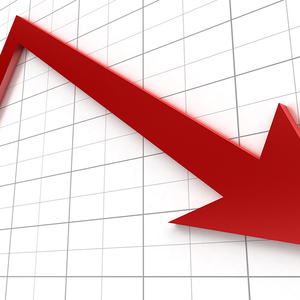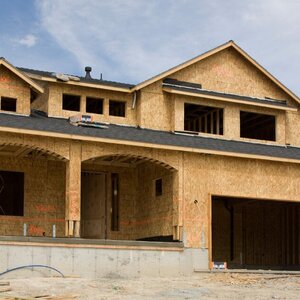The WPJ
THE WORLD PROPERTY JOURNALReal Estate Facts Not Fiction
Residential Real Estate News

New Home Sales in U.S. Dive 8.9 Percent in October
Residential News » San Diego Edition | By Michael Gerrity | November 29, 2018 9:00 AM ET
Home Affordability Challenges Persist in U.S.
According to the U.S. Department of Housing and Urban Development and the U.S. Census Bureau, sales of newly built, single-family homes fell to a seasonally adjusted annual rate of 544,000 units in October 2019 after an upwardly revised September 2019 report. This is the lowest sales pace since December 2016. However, on a year-to-date basis, sales are up 2.8 percent from this time in 2017.
"The November reading is consistent with reports from our builders, who say that the job market and demographic tailwinds bode well for housing demand but rising interest rates and home prices are forcing customers to take a pause," said Randy Noel, chairman of the National Association of Home Builders. "Policymakers should see this drop in sales as an indicator that housing affordability will continue to slow down the market."
"Home sales declined this month as housing affordability continues to be a hurdle for consumers," said NAHB Senior Economist Danushka Nanayakkara-Skillington. "While a solid economy and positive demographics support future demand for housing, it is critical to address this mounting affordability crisis."
A new home sale occurs when a sales contract is signed or a deposit is accepted. The home can be in any stage of construction: not yet started, under construction or completed. In addition to adjusting for seasonal effects, the October reading of 544,000 units is the number of homes that would sell if this pace continued for the next 12 months.
The inventory of new homes for sale rose to 336,000 in October. The median sales price fell 3.6 percent to $309,700, as the market is shifting to townhomes and other lower-cost houses.
Looking at the regional numbers on a year-to-date basis, new home sales rose 6.3 percent in the Midwest, 4.1 percent in the West, and 3.8 percent in the South. Home sales fell 17.1 percent in the Northeast year-to-date.
The Mortgage Bankers Association's Chief Economist Mike Fratantoni tells The World Property Journal, "New home sales fell in October and are running substantially behind last year's pace. However, the September number was revised up substantially. The hurricanes in the South and wildfires in the West likely impacted both months' numbers, and continue to cloud the picture of the housing market's overall strength. The strong job market and rising wages should continue to support housing demand, but the lack of affordability has been a major constraint this year. The increase in supply on the market will be a positive as we move into 2019."
According to the U.S. Department of Housing and Urban Development and the U.S. Census Bureau, sales of newly built, single-family homes fell to a seasonally adjusted annual rate of 544,000 units in October 2019 after an upwardly revised September 2019 report. This is the lowest sales pace since December 2016. However, on a year-to-date basis, sales are up 2.8 percent from this time in 2017.
"The November reading is consistent with reports from our builders, who say that the job market and demographic tailwinds bode well for housing demand but rising interest rates and home prices are forcing customers to take a pause," said Randy Noel, chairman of the National Association of Home Builders. "Policymakers should see this drop in sales as an indicator that housing affordability will continue to slow down the market."
"Home sales declined this month as housing affordability continues to be a hurdle for consumers," said NAHB Senior Economist Danushka Nanayakkara-Skillington. "While a solid economy and positive demographics support future demand for housing, it is critical to address this mounting affordability crisis."
A new home sale occurs when a sales contract is signed or a deposit is accepted. The home can be in any stage of construction: not yet started, under construction or completed. In addition to adjusting for seasonal effects, the October reading of 544,000 units is the number of homes that would sell if this pace continued for the next 12 months.
The inventory of new homes for sale rose to 336,000 in October. The median sales price fell 3.6 percent to $309,700, as the market is shifting to townhomes and other lower-cost houses.
Looking at the regional numbers on a year-to-date basis, new home sales rose 6.3 percent in the Midwest, 4.1 percent in the West, and 3.8 percent in the South. Home sales fell 17.1 percent in the Northeast year-to-date.
The Mortgage Bankers Association's Chief Economist Mike Fratantoni tells The World Property Journal, "New home sales fell in October and are running substantially behind last year's pace. However, the September number was revised up substantially. The hurricanes in the South and wildfires in the West likely impacted both months' numbers, and continue to cloud the picture of the housing market's overall strength. The strong job market and rising wages should continue to support housing demand, but the lack of affordability has been a major constraint this year. The increase in supply on the market will be a positive as we move into 2019."
Sign Up Free | The WPJ Weekly Newsletter
Relevant real estate news.
Actionable market intelligence.
Right to your inbox every week.
Real Estate Listings Showcase
Related News Stories
Residential Real Estate Headlines
- Orlando's Housing Market Continues to Slow Down This Fall
- U.S. Mortgage Originations Predicted to Hit $1.95 Trillion in 2024
- Construction Input Costs in America Uptick in September
- Global Home Price Growth Further Slows in Mid-2023
- Home Values in U.S. Begin to Slip Late Summer
- Foreclosure Filings in U.S. Spike 34 Percent Annually in Q3
- U.S. Mortgage Credit Availability Upticks in September
- Retail Market is a Bright Spot for Manhattan Real Estate
- Residential Rents in U.S. Dip in September Amid Growing Apartment Supply
- U.S. Mortgage Rates Continue to Surge in October
- Greater Las Vegas Home Sales Down 10 Percent Annually in September
- Most U.S. Homebuyers Say Buying a Home is More Stressful Than Dating in 2023
- Mortgage Applications Dive 6 Percent Last Week in America
- Despite Peak Interest Rates, Global Housing Markets Improved in Q2
- U.S. Architecture Billings Index Reports Softening Business Conditions in August
- U.S. Home Price Growth Pace Upticks Again in August
- 10,000 Residential Properties Have Negative Equity in Hong Kong
- U.S. Pending Home Sales Dropped 7.1 Percent in August
- U.S. Mortgage Rates Reach Highest Level in 23 Years
- American Bankers See Weakening Credit Conditions Through End of 2024
- Palm Beach Area Residential Sales Uptick in August
- Driven by High Mortgage Rates, Pending Home Sales Drop 13% Annually in September
- Miami Area Residential Sales Slip 13 Percent Annually in August
- U.S. Home Sales Dip 15 Percent Annually in August
- Home Flipping Transactions Down in 2023, Profits Up
- U.S. Listings Inventory Rises 4 Percent in August
- The Fed Leaves Rates Alone for Now in September
- Mortgage Applications Uptick in U.S. Amid High Rates
- Single Family Rent Growth in U.S. Drops to 3-Year Low in July
- Greater Orlando Area Home Sales Down 16 Percent Annually in August
- Home Purchase Cancellations Accelerating in the U.S.
- U.S. Construction Input Costs Uptick in August
- U.S. Mortgage Credit Availability Upticks in August
- Monthly Property Foreclosure Activity Upticks in U.S.
- Greater Palm Beach Area Residential Sales Dip 5 Percent Annually in Mid-2023
- NAR Predicts Several U.S. Housing Market Outcomes
- Demand for U.S. Housing is Dropping as Prices Rise
- U.S. Homeowner Equity Decrease by $287 Billion Over the Last 12 Months
- 1 in 5 Millennials Think They'll Never Own a Home in America
- 1 in 8 San Francisco Home Sellers Is Losing Money at Closing in 2023
Reader Poll
Marketplace Links
This website uses cookies to improve user experience. By using our website you consent in accordance with our Cookie Policy. Read More





